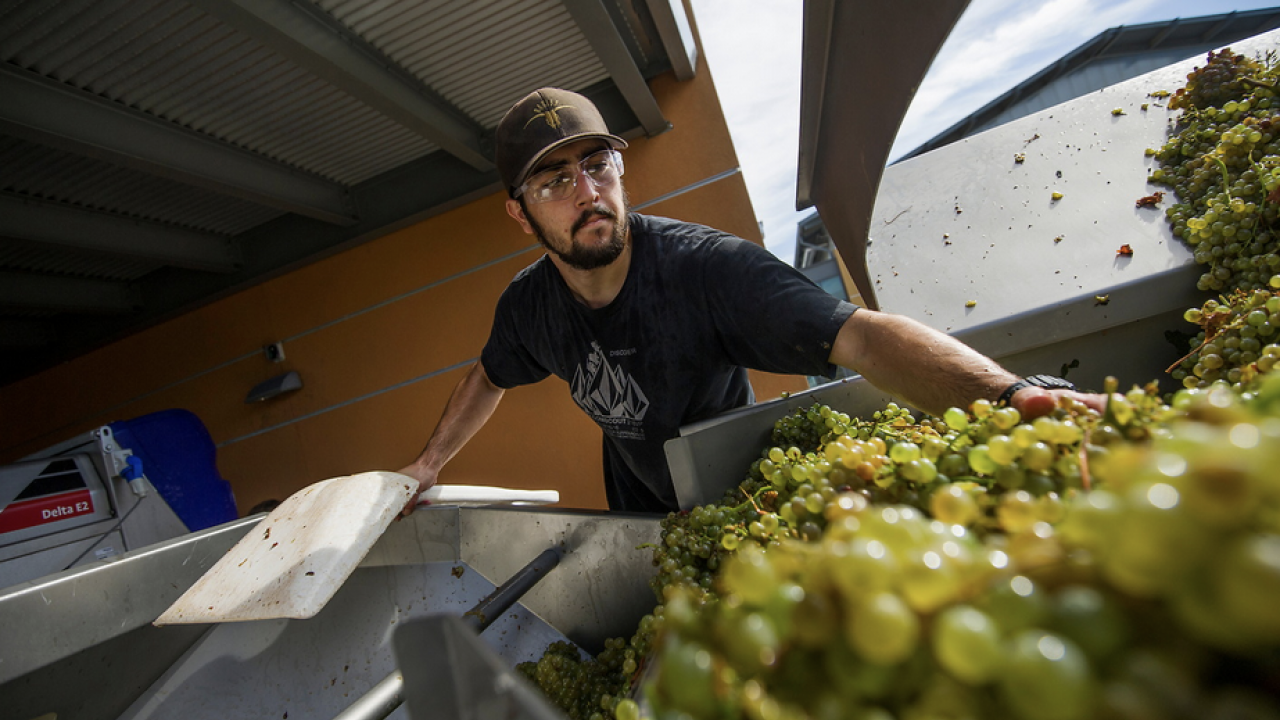
Do you have what it takes to study wine at UC Davis?
Looking for an easy A with a happy hour? Don’t enroll in the Department of Viticulture and Enology at the University of California-Davis.
“A lot of students come here thinking they’re going to get to taste a lot of wine,” says Andrew L. Waterhouse, director of the Robert Mondavi Institute of Wine and Food Science and professor of enology.
And eventually they will – in an academic sensory setting under a professor’s watchful eye. But first, says Waterhouse, “there is a breadth of science, art and craft.” The RMI brings those three disciplines together in an institute that has achieved world-class status and recognition in a little more than 20 years. Its focus melds expertise and education to train outstanding viticulturists and winemaking innovators for an industry in constant flux.
At the risk of taking the romance out of this curriculum, no one earns a diploma in a Bachelor or Masters of Science in Viticulture and Enology without plant physiology, organic chemistry, biochemistry, biology, microbiology, horticulture, statistics, physics, chemistry, genetics, yeast qualities, chemical engineering, sensory training, physical labor, and lots of people in lab coats.
Students … know they’re studying at the world’s jewel of vine and wine education and are being set up for success
Before the erudite pleasures of a tasting class – sniffing, swirling and sipping wine, then spitting into a cup functioning like a personal spittoon – students must do field work in the vineyards.
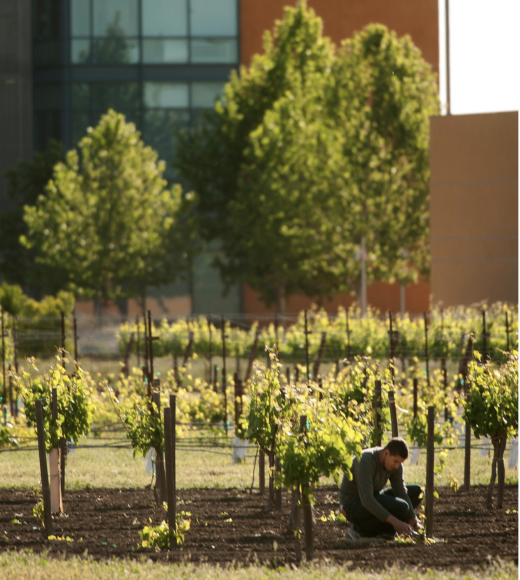
“It’s rigorous and fast-moving,” says Martha Stoumen, a Masters graduate now with her own eponymous label. With an undergraduate degree in pre-med, Stoumen was familiar with several science requisites, though not horticulture. At RMI, she required more science. “It was like having two bachelors. But it’s also a nice place to work.”
Davis inherited its wine program from UC’s original campus at Berkeley. In 1880, the California Legislature mandated the Regents of what was then the College of Agriculture to offer wine education. There it stayed until two years after the repeal of Prohibition in 1933 when the Department of Viticulture and Enology was moved to Davis, a much more suitable location for agriculture.
[Our goal] “is not to make pretty wine, but to make good winemakers.”
The idea for the RMI was something of a rescue mission. In the late 1990s, the late department chair James Wolpert escorted the esteemed Robert Mondavi on a tour of the original building. He recalled Mondavi’s dismay at how rundown it was.
In 2001, a gift of $25 million from Mondavi and his wife, Margrit Biever, launched the Robert Mondavi Institute for Wine and Food Science. It joined Viticulture and Enology and the Food Science and Technology departments in one facility to promote collaboration and cooperation.
A complex of buildings and vineyards slowly sprouted from a triangle of alfalfa on the edge of the Davis campus. Sustainably built, the buildings that house classrooms, faculty offices and meeting rooms are sleek and angular, with an organic feel. They seem to blend effortlessly into the surrounding agricultural landscape lush with olive trees, a seasonal garden, and the test vineyards. It is the first winery with zero-carbon emissions and the most water-efficient winery in the world.
At the end of a walkway past an edible garden is the 3,500-square-foot Sensory Theater, which seats 100. It’s like an indoor amphitheater with curved rows of glossy wood desks for resting tasting cups and writing notes. Not just for students, the public is invited for conferences, lectures, public tastings, educational banquets and social gatherings.
Viticulture and Enology is a small department, graduating 40 Bachelors and 10 to 15 Masters annually. Students accepted into the RMI’s Department of Viticulture and Enology know they’re studying at the world’s jewel of vine and wine education and are being set up for success. But they know that if they don’t bring zeal and commitment to this all-consuming enterprise, they’ll never rise above mediocre.
Waterhouse is explicit: “Students don’t fall into this by accident. When they show up at our door, they’re passionate. We never see students who don’t know what they’re going to major in.”
Passion runs in the family of Xin Zhang. She’s a third-generation winemaker from China’s first winemaking family. She has a Bachelor degree from China. She came to UC Davis as an exchange student and graduated with a Master’s in 2018.
“We say wine is alive. It is always changing,” Xin Zhang says.
Her biggest challenge at school here was critical thinking and analyzing the work of others. “I was adapted to education in China. An author did the research and that was that. In the US, professors promote a lot of intellectual thinking.”
She speaks poetically of a product that is her family’s legacy. “The winemaker is a scientific artist conducting a symphony found in your glass.” She also appreciates that university faculty is connected to the industry. Zhang sells two-thirds of the production of her Napa label, 70sLoveWine, to China.
In RMI’s Department of Viticulture and Enology, the process starts in the test vineyard. Viticulture students slog along paths between rows of experimental grapevines in muck thick as caramel during rainy winters or dusty as adobe in 114-degree summers.
“Completing my research at RMI was a gift.”
The weather matters not to Andy Walker, a geneticist and viticulture professor. His reputation for never canceling class is old news to the huddled juniors shivering or sweating between the rows. It took a lightning strike for Walker to cancel class.
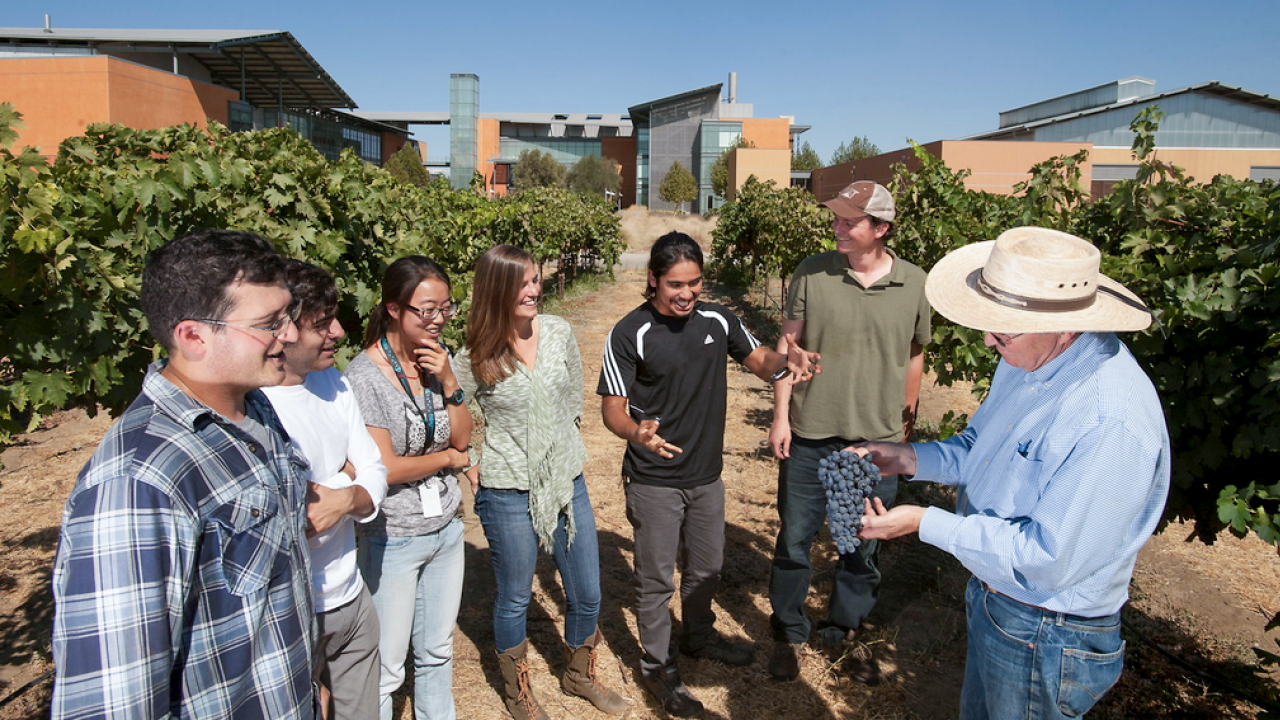
With humor seldom found in the often-serious world of wine, Walker has a rule: “We don’t go inside unless I’m miserable.”
Paths between rows of test vines are wider than in commercial vineyards. Walker needs space for at least 30 students. He explains that every vine is different. Optimally, the key to pruning is to train them at the same time, to keep them uniform.
She abandoned corporate mergers in New York for winery internships in California and Australia.
The RMI test vineyard has 60 or so vines in 60 or 70 rows which students plant, train, clip, prune and shape. Aiming the clippers is fraught with peril. Walker stands over their shoulders.
“I tell them wear gloves. This is dangerous. Never bring your left hand and your right hand closer than a foot together.”
He queries: “Do we want a vase shape? How many buds to leave? Do you want the vines to grow up? Sideways?” If a plant is too vigorous, the grapes will crowd and rot. Not a week goes by without maintenance. In spring, students install a couple of acres of injured vines. They learn to improve them with evolving techniques.
“A student 10 years ago didn't get what students see being done now,” Walker says. By fall, students must identify 30 or 40 wine-grape varieties by leaf and cluster.
Nearly 90% of Walker’s viticulture students want to be winemakers. Current Masters student Lauren V. Saltiel came to Viticulture and Enology with a law degree. She abandoned corporate mergers in New York for winery internships in California and Australia. Outdoor vineyard labor suited her, but it was alien.
“I’m from Florida,’’ she says. “I just didn't grow up fixing irrigation.”
During an internship at Opus One, where the cheapest bottle of wine retails for nearly $240, Saltiel worked in the winery’s lab with it vast strains of yeast. By her second Master’s year, she wanted to make wine and contribute to viticulture.
Karla Palomares graduated in 2019. “Andy Walker is why I know about vineyards,” she says. Palomares is now a lab technician at the highly-regarded Peju Winery in Napa Valley. She’s a believer in stepping into the vineyard often for information only grapes can give. “I spent four years pulling root stock. Planting a vineyard is not like planting tomatoes. You’re always going to need to know vineyards to proceed making the wine.”
A Wireless Fermentation System
The RMI’s campus winery could be the envy of functioning wineries anywhere. Wireless technology monitors 14 500-gallon and 150 55-gallon stainless steel fermenters by remote control. Professor Hildegarde Heymann, the winemaking instructor, starts students without the latest hardware because RMI’s goal “is not to make pretty wine, but to make good winemakers.”
“You … have to know the rules to break the rules,”
Students get one little tank to make their own wine. To prepare for the intimidating experience of working in a large winery, students also collectively make wine from a big stainless-steel tank. The wine in the little tank is theirs to design.
What could go wrong? Any number of things: too much acid. Not enough acid. Grapes picked unripe. The juice turns to vinegar. Not enough tannin. Too much tannin. Should sugar be added? Even Waterhouse’s first research wine had a strong whiff of vinegar. It was put to good use in the tasting class as an example of a disaster.
The lab is where students can use their little tanks of wine to pursue a personal style. Wine can be manipulated for the betterment of what ends up in the bottle. Centrifuges, filtration apparatus, beakers, pipettes, Bunsen burners, vacuums and microscopes that detect yeast spoilage are standard equipment here. Acid is routinely added to California wine so it won’t be flabby. Sulfites remain controversial and require a label warning for asthmatics.
Michael Silacci is winemaker at Opus One Winery. He graduated from the UC Davis wine program in the 1980s, long before the RMI was built. He returns often as a guest lecturer affirming that a winemaker can come from any background and any unrelated interest. He worked at perfumeries,
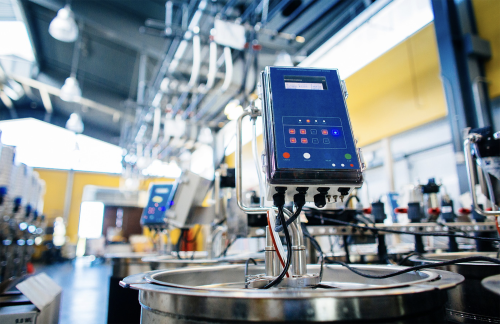
Revlon and did window displays. He considered teaching kindergarten. Today, he might have 50 little baggies of fermentation with different yeasts to find a defect, like the unwanted smell of nail polish. He esteems work in the vineyard. “They’re like sculptors. They think in the moment to affect the future.” No matter any experimental indulgence, Silacci stays subtle. “You should not see my footprints in the vineyards or my fingerprints on the glass.”
A trend to minimal intervention is creating a market for low alcohol “natural” wines.” Waterhouse is open to such products. Former student Stoumen is headed in this direction.
“You kind of have to know the rules to break the rules,” she says.
She might add sulfites to her bright wines but remains tethered to minimalism.
“Every grape is a winemaking kit. It has yeast in the skin, it has water, sugar and color, so fermentation is straightforward. If you know the science, you know the art. But when you peel back the layers of fermentation, it can be incredibly complex.”
And alumni are all over the world.
Stoumen once consulted with a winemaker who wanted a “natural” luscious wine low in acid and tannin. “It’s possible, but against the laws of chemistry,’’ she says. “The less you do, the more precise you have to be.” That wine would spoil quickly.
She might never have had the nerve to consider her hands-off approach to create the light, bright wine style that challenges her every day were it not for her UC Davis degree.
“Completing my research at RMI was a gift.”
Finally, it’s time for students to learn to assess wine’s sensory qualities. After several years in the program, student palates mature. But for Xin Zhang, the sensory component was difficult. In order to compare flavors, one has to have experienced them before. Americans may not be able to detect lychee or wormwood. Zhang says Chinese would not recognize rosemary. Palomares remembers a class consensus that left her on the sidelines. “Everyone else thought a sample smelled of honeysuckle, but to me it smelled like burnt rubber.”
The RMI turned out to be more than a vanity project for Robert Mondavi, who died in 2008. A diaspora of highly-educated graduates with overlapping scientific expertise in the vineyard and winemaking benefit outcomes from grapes grown all over the world.
And alumni are all over the world. They’ve ended up at some of the most famous wineries in the country – Opus One, Jordan, Domaine Carneros and Silver Oak. Waterhouse has sent many students to France – one went to Domaine Romanée Conti in Burgundy and another to Chateau Margaux in Bordeaux. (If these French wineries are unfamiliar, just know that they’re old and venerable).
Graduates add vision to consumer-driven behemoths such as Gallo or slip seamlessly into the personal styles of artisan winemakers. They work in production around steel tanks on cement floors navigating a tangle of pumps. They’re vineyard managers and winemakers. They become distillers, sommeliers, enology professors, writers, consultants, sellers of ingredients such as yeast and tannin. They sell winery machinery, contribute to winery architecture, enter sales and marketing. Many start their own brands.
And students do drink wine. After school, they may pool their money and head to San Francisco where they order several bottles of wine to enjoy and assess. They do a lot of partying, but not on campus.
About the Author
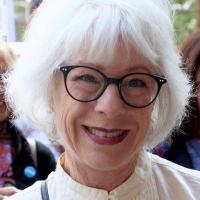
Elaine Corn is a former news editor turned food editor and author. Her journalism career began with a bachelors of journalism from the University of Texas-Austin and in succession with jobs as copy editor at the Dallas Morning News and Austin American-Statesman. While in Austin, Elaine became interested in food and created the paper's first food section, becoming its first food editor. To learn more about food, she cooked her way from Europe to Israel and onto a private yacht sailing from Greece to Turkey as its only cook. Once back in America, she headed up food sections for the Louisville Courier-Journal and Sacramento Bee. While at the Bee, the paper won awards for Best Food Section and Best Food Reporting from the Association of Food Journalists. She is author of six cookbooks. "Now You're Cooking: Everything a Beginner Needs to Know to Start Cooking Today" won Julia Child and James Beard culinary awards. Having begun a conversion from print to radio journalism, Elaine continues the search for food stories in every corner of life.
